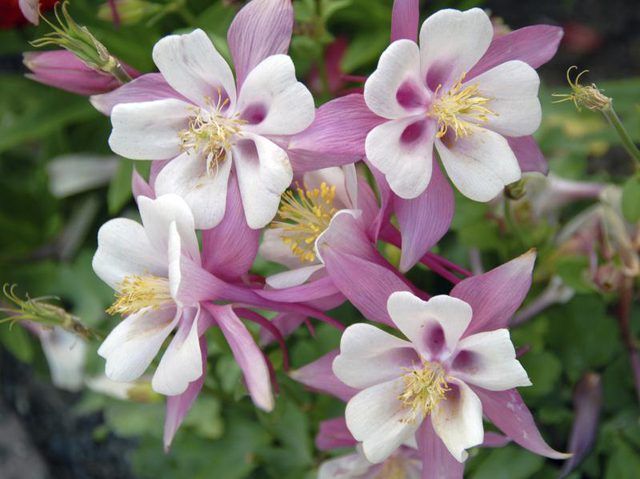Bulbs
Flower Basics
Flower Beds & Specialty Gardens
Flower Garden
Garden Furniture
Garden Gnomes
Garden Seeds
Garden Sheds
Garden Statues
Garden Tools & Supplies
Gardening Basics
Green & Organic
Groundcovers & Vines
Growing Annuals
Growing Basil
Growing Beans
Growing Berries
Growing Blueberries
Growing Cactus
Growing Corn
Growing Cotton
Growing Edibles
Growing Flowers
Growing Garlic
Growing Grapes
Growing Grass
Growing Herbs
Growing Jasmine
Growing Mint
Growing Mushrooms
Orchids
Growing Peanuts
Growing Perennials
Growing Plants
Growing Rosemary
Growing Roses
Growing Strawberries
Growing Sunflowers
Growing Thyme
Growing Tomatoes
Growing Tulips
Growing Vegetables
Herb Basics
Herb Garden
Indoor Growing
Landscaping Basics
Landscaping Patios
Landscaping Plants
Landscaping Shrubs
Landscaping Trees
Landscaping Walks & Pathways
Lawn Basics
Lawn Maintenance
Lawn Mowers
Lawn Ornaments
Lawn Planting
Lawn Tools
Outdoor Growing
Overall Landscape Planning
Pests, Weeds & Problems
Plant Basics
Rock Garden
Rose Garden
Shrubs
Soil
Specialty Gardens
Trees
Vegetable Garden
Yard Maintenance
How to Prune Columbine (Aquilegia)
How to Prune Columbine (Aquilegia). Intriguing flower shape makes columbine (Aquilegia spp.) a valued addition to the perennial or wildflower garden. Each flower's four spurred, backward-pointing petals hold nectar that attracts hummingbirds. Those petals frame a usually downward-pointing cup of petals that are often a contrasting color. Flower...

Intriguing flower shape makes columbine (Aquilegia spp.) a valued addition to the perennial or wildflower garden. Each flower's four spurred, backward-pointing petals hold nectar that attracts hummingbirds. Those petals frame a usually downward-pointing cup of petals that are often a contrasting color. Flower stalks rise above the plant's mound of ferny-looking leaves. A clustering perennial that reseeds freely, columbine is hardy in U.S. Department of Agriculture plant hardiness zones 3 through 9, depending on the species or variety. Columbine's pruning needs center around tidiness, renewing summer growth and maintenance during dormancy.
Following Good Practices
Before any pruning job, cleaning your pruning tools with a cloth soaked in rubbing alcohol will help prevent the spread of plant diseases. Also cleanse tool blades after pruning one plant so they are disinfected when you move to the next plant, or else pathogens in plant sap or tissues on the blades can spread from plant to plant. Cleaning the pruning tools at the end of the work session is important as well.
Removing Spent Flowers
Preventing columbine from reseeding in garden areas involves removing the plant's old flowers as they fade by pinching them off with your fingertips. Columbine sets seed easily and gives rise to volunteer seedlings that come up in unexpected areas. If you have more than one kind of columbine in your garden, then the seedlings probably won't have the same flower colors as the parent plants because they are the result of cross-pollination. Some gardeners welcome the chance of having columbines come up wherever nature plants them, and they purposefully don't remove spent flowers, allowing seed heads to form and release their seeds.
Cutting Back After Flowering
Columbine blooms in spring and early summer, depending on the variety. After it finishes flowering, prune away its flower stalks to keep the plant tidy. If you want to renew the columbine's growth after it flowers, then cut back the entire plant by about one-third to one-half its height. New leaves will grow from the plant' base, forming a fresh mound of leaves that should last through summer.
Trimming in Early Winter, Fall or Spring
Columbine foliage dies back in areas with cold winters, and the plant may become dormant in mild-winter areas. In early winter, remove dying and dead leaves from a native columbine, such as red columbine (Aquilegia formosa), which is hardy in USDA zones 3 through 9, by cutting its leaf stalks near ground level. If you live in an area with mild winters, then tidy the plant in either fall or spring by removing its worn- or dried-looking leaves.
Controlling Pests and Diseases
Usually, columbine isn't prey to many pests or diseases. Two problems that can occur are powdery mildew and columbine leaf miner. Powdery mildew is a fungal infection most likely to strike during periods of warm days, cool nights and high moisture levels. Control powdery mildew by pruning off affected plant parts, down to the ground if necessary. It also helps to increase air circulation around all plants. Columbine leaf miners are small fly larvae that tunnel inside a leaf, eating its green middle layer between the top and bottom epidermal layers. The larvae leave light-colored, winding tracks within leaves. Prune off all infected leaves after the columbine has flowered, and destroy the removed leaves.